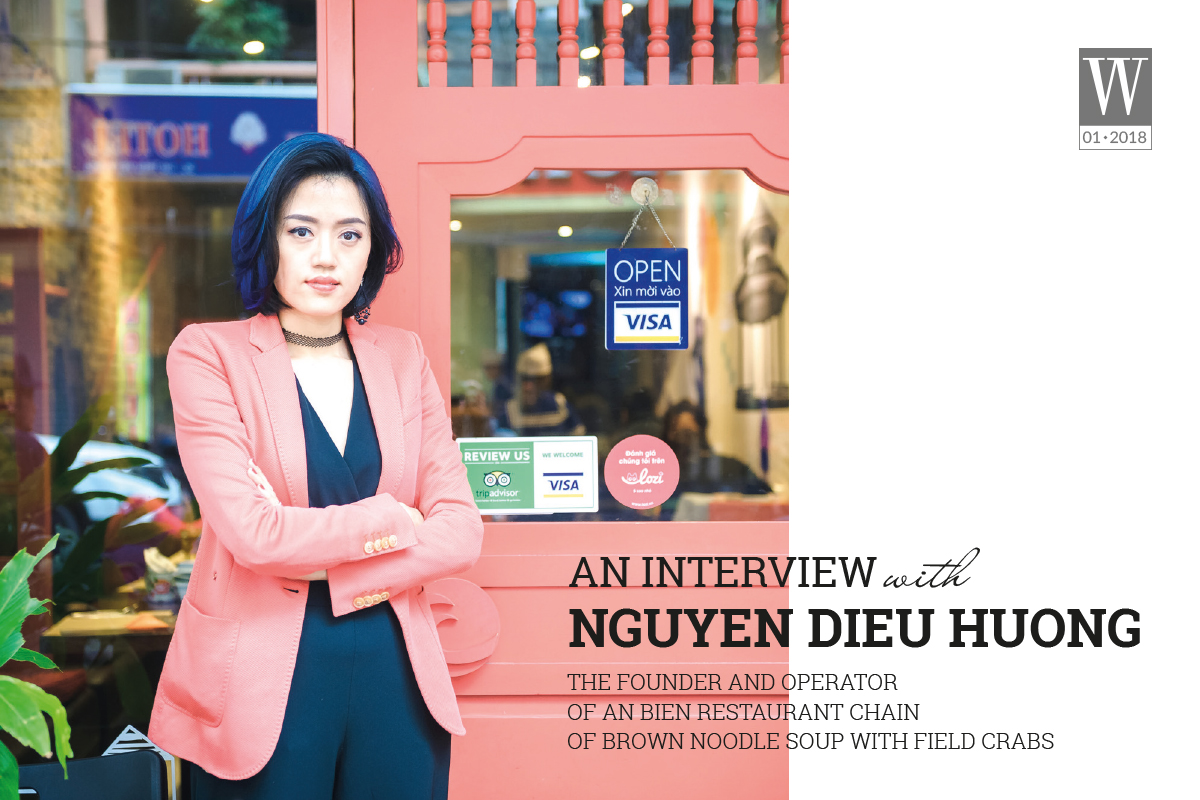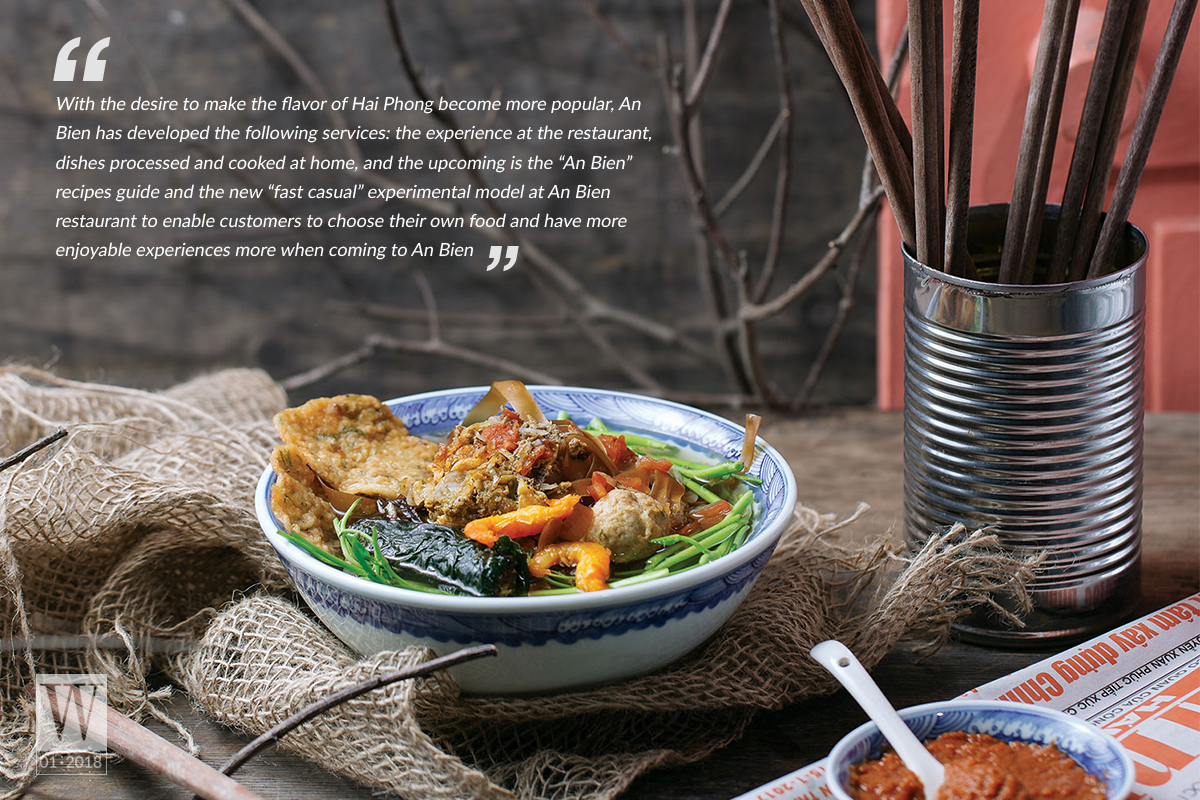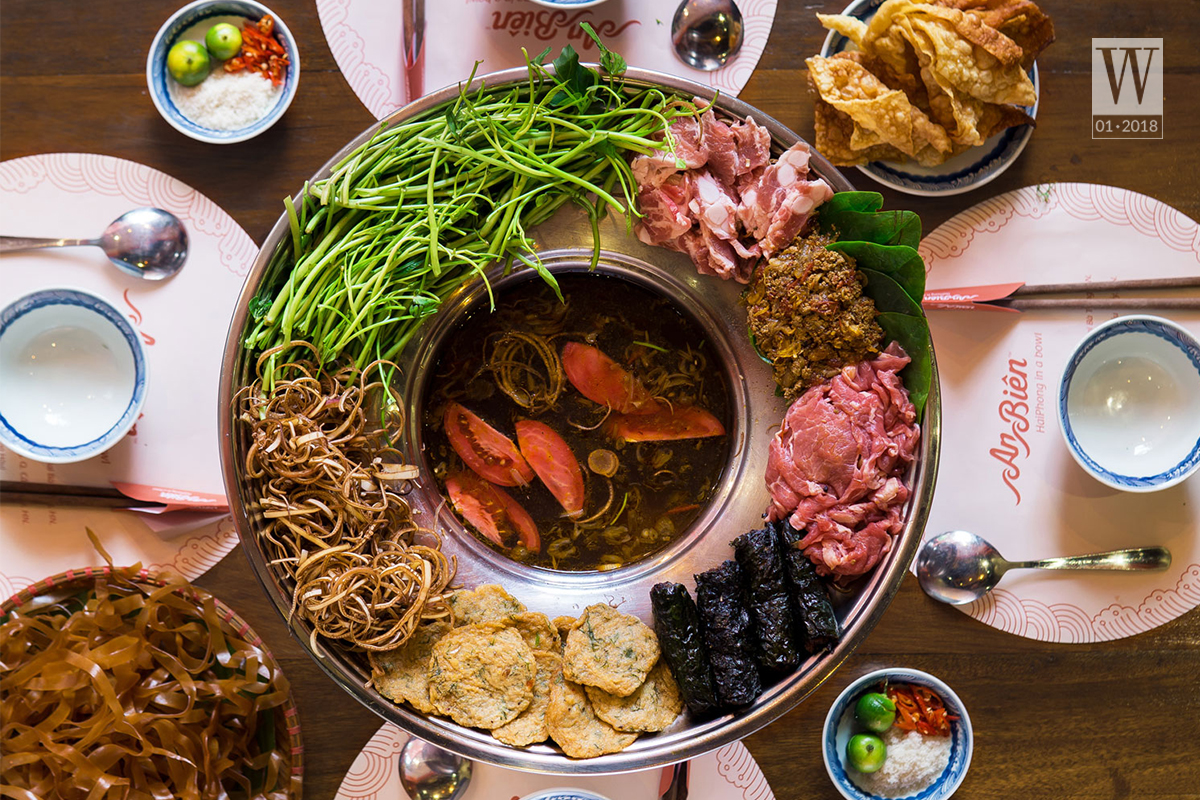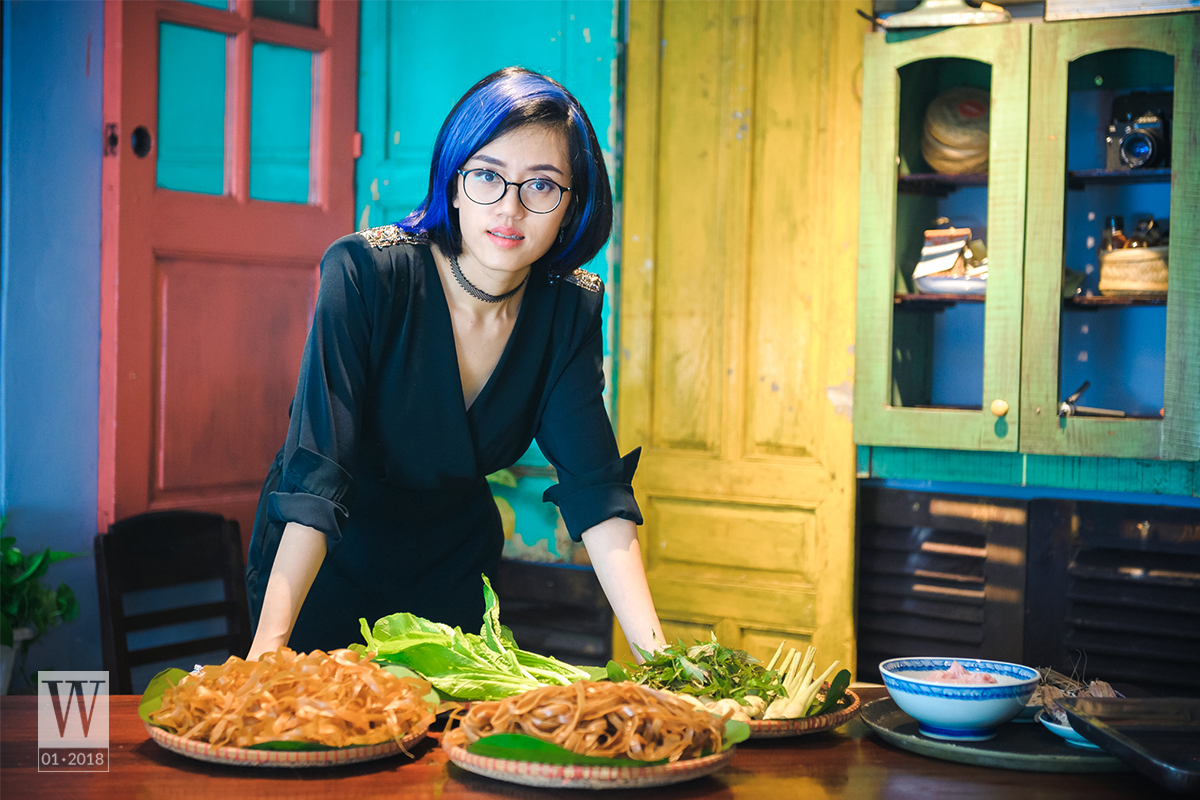[Wanderlust Tips January issue 2018] Nguyen Dieu Huong was born in 1983 in Hanoi. She won a full scholarship and graduated in russia with a very good degree in her major of product design, and later worked at the worldfamous fashion group Louis Vuitton. However, Huong always felt a strong bond with the food industry and six years after starting in this completely new field, she is now the owner of 3 an bien restaurants in Hanoi.
[rpi]

Hello Huong. I know that you were born in Hanoi. What inspired you to become the owner of An Bien restaurants with a focus on Hai Phong?
I grew up in a family with many members; my grandparents moved from Vietnam to many cities along the Mekong countries such as Thailand, Cambodia, and Myanmar so our meals are diverse and influenced by various local cuisines from all regions. My mother was the person who taught me the principles of spice mixture, as well as how to cook dishes to honor the flavours of different materials.
With my passion for cuisine, I have been attracted since I first explored and enjoyed the essence of Hai Phong’s street food. And the person who encouraged the idea of An Bien establishment as well as supported me with all his heart was my husband – who was born and raised in Hai Phong.
I began to search for information from friends and through social networks and realized that there were many people originally from Hai Phong who were settling down and living in Hanoi just like my husband; they would definitely feel excited and proud when seeing their childhood dishes in another city. So a few months later, in 2011, the first An Bien restaurant was opened in a small space at the end of Trieu Viet Vuong street, with just one dish being served, brown noodle soup with field crabs – a famous food which has become a feature of Hai Phong.
Was it a difficult decision for you to leave your job at Louis Vuitton and develop An Bien restaurant into a chain model?
At that time, I was filled with passion for exploring and experiencing. The bigger the challenge was, the more energetic I felt. Graduating from a university in Moscow, I returned to Vietnam with the only experience in product design and several years of experience in retail fashion management. I learned about the market and customer experience, communicated and took care of premium and middle-class customers.
More importantly, I understood how to operate a service business in Vietnam’s market. Working in a professional environment like Louis Vuitton, I learned a lot about concentration at work, systematic and inventive thinking, as well as the way to care for each product and service. The biggest difficulty for me was to decide to work in a new field, to face a real business environment where I was the only person to be in charge of the restaurant.

Whether it was a success or a failure, I had to accept to be more mature in my life. I decided to quit my job and tried to equip myself with the necessary knowledge for this next journey – to make An Bien, as well as Hai Phong’s cuisine, become more popular to people all over the places.
Hai Phong’s cuisine often includes street food. When bringing these dishes into the restaurant space, what difficulties and obstacles did you encounter?
The greatest difficulty lies in creativity. Besides creating new experiences, you have to preserve and develop the core values of gastronomy. Hai Phong is located near fertile plains and the sea with abundant seafood sources, so its cuisine is also a delicious combination of seafood and a variety of products and specialties made from rice such as Vietnamese rice pancake, rice vermicelli, and vermicelli served with water spinach and water celery.
Our challenge is not only to maintain the traditional recipes of famous dishes such as brown noodle soup with either field or sea crabs, fern-shaped cakes, spicy stick-bread, grilled fish vermicelli, but also to create new dishes based on traditional recipes, yet having individual taste, and present them in more modern cuisine that matches the modern lifestyle.

The creativity can be seen clearly in dishes such as fried sea crabs served with fragrant crispy sesame rice crackers, the sauces served with mixed brown rice noodle, water spinach salad with giant tiger prawns or bombay duck tempura – a kind of spineless fish in the traditional bombay duck soup of Hai Phong.
What factors did you consider in the running of the operation when you expanded into An Bien restaurant chain?
The development of An Bien from a restaurant into a chain of restaurants is quite complex, involving setting up concepts for space and products, opening new restaurants but still ensuring the consistent quality of products and services. In each space, I would like to tell a different story about the city and people of Hai Phong through not only the richness of cuisine but also the diversity in culture, architecture and daily life activities of Hai Phong’s people from ancient times to present. These offer a “travel” experience for customers when visiting each restaurant in An Bien system.
Could you share with our readers the upcoming plans of An Bien restaurants?
Vietnam in recent years has the advantage in updating advanced technology of the world. As a leader, I am aware of the importance of changes in management as well as the application of advanced technology in interacting and approaching customers to grasp the best business opportunity. An Bien has operated with very effective support from the whole system, including sales, warehouse management from workshop to restaurants, production and customer care to optimize the process of operation, improvement in the efficiency and qualification of employees. Customers will be offered not only the onsite service and dishes but also a menu of packaged pre-processed products for takeaway or delivery service; a list of Hai Phong’s featuring ingredients and processing formula will be introduced to each customer so that beyond street food, Hai Phong’s cuisine will be remembered as a characteristic to introduce the culture of the land like some Vietnamese food such as Pho Hanoi, Bun bo Hue (Hue-style beef vermicelli soup), Bun mam (fermented thick Vietnamese vermicelli soup).

In 2018, An Bien will introduce the threelayer brown noodle soup cooked in a clay pot stove – a dish that is gradually disappearing in Hai Phong. This type of noodles is thicker and tougher, so when dipped into water for a long time, it will not be limp and also taste better. In addition, the delivery of three-layer noodles is also guaranteed have up to 90% of the quality of when it is served in the restaurant.
Besides main dishes, Sủi dìn sweet soup – the famous Tangyuan of the winter, An Bien will introduce different light dishes. For example, there are dishes served in cold season like in New Year such as Xì Lồng Cấu – a cake made from rice flour mixed with glutinous rice and roasted peanuts and sugar, then being made into a fragrant sticky-rice cake which is indispensable on a tray of offerings on Tet holiday.
What has inspired you the most on your journey with An Bien?
I always believe that success is not just about the destination, but the value created on the way we go. I only have the chance to experience that when I do my favorite job, when I am in the position of a company leader, when I am accompanied by my dedicated colleagues. The firm belief of our partners, customers or the urge that we have to improve ourselves so that the people in An Bien that we often call “An Bien home” will be proud of.
The biggest value that makes me happy is to feel the joy when our products are well received, and feedback from customers has strengthened motivation and maturity to our team over the years. Besides the hard work, there are always tears, and at the end awaiting us is happiness.
Thank you for your sharing. We wish you and An Bien great success.
Hong Nhung | Wanderlust Tips

